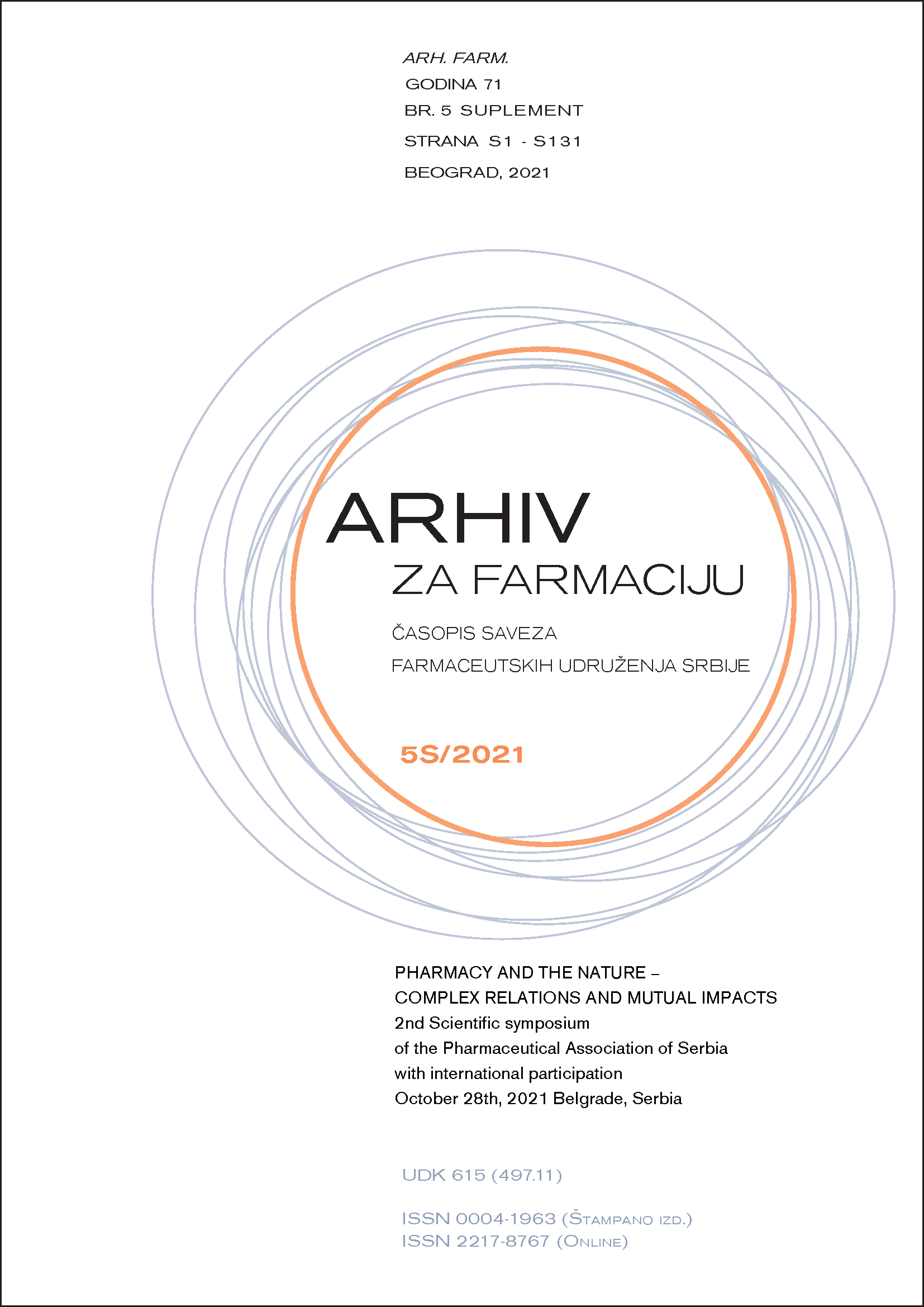BUILDING QSRR MODEL FOR RP/WCX HPLC METHOD DEVELOPMNET
Abstract
Reverse-phase high-performance liquid chromatography (RP-HPLC) is most common in pharmaceutical analysis and requires significant consumption of toxic mobile phase. Therefore, more eco-friendly solutions are preferred (1). When it comes to complex samples, RP-HPLC, due to inability to separate highly polar and charged analytes, often requires multiple unimodal or two-dimensional HPLC analyzes. The development of mixed-mode liquid chromatography (MMLC), where multiple separation modalities are incorporated into a single stationary phase, allows the separation of complex samples in a single run. Numerous factors affect MMLC separation, which makes method development demanding and limits their practical application (2). Building predictive mathematical models, such as Quantitative structure-retention relationship (QSRR), could improve method development. QSRR links the molecules’ retention behavior with their physicochemical properties (molecular descriptors (MD)), which allows retention behavior prediction of untested analytes. Including experimental parameter values in the QSRR extends the predictability of the model to entire experimental space (3). For model development purposes, experiments were performed on Thermo’s Acclaim Mixed-Mode WCX-1 (3 μm, 2.1 x 150 mm) column which combines hydrophobic and weak cation exchange (WCX) interactions. Small diameter column agrees with low mobile phase flow rate (400 μl/min). Mobile phase composition (acetonitrile content (30 – 50 % (v/v)), pH (3.8 - 5.6) and ionic strength (20 - 40 mM) of acetic buffer) and column temperature (30 – 38°C) were varied according to face-centered central composite design. Retention factor of 33 pharmaceuticals of different pharmacological and ionization properties were monitored. MDs were calculated using AlvaDesc software. RapidMiner software was used for obtaining QSRR models. Several machine learning algorithms were considered and the most informative (gradient boosted trees (GBT) and bagging neural network (BNN)) were selected. Models were built upon data of 30 analytes, and the remaining three (anion, cation, neutral) were used as a test set. The most influential MDs for BNN were chosen by forward selection, contrary to GBT which did not require preselection. For internal model evaluation 10-fold cross-validation was applied, while external was performed with a test set. Models were compared based on the relative mean square error (RMSE) of the test set. The BNN (RMSE = 0.104; R2 = 0.976) model outperformed GBT (RMSE = 0.122; R2 = 0.963). The obtained QSRR models showed good potential to predict the retention behavior of molecules of different ionization abilities in the RP/WCX system. This could improve the development of MMLC methods and make them more accessible for practical use.

